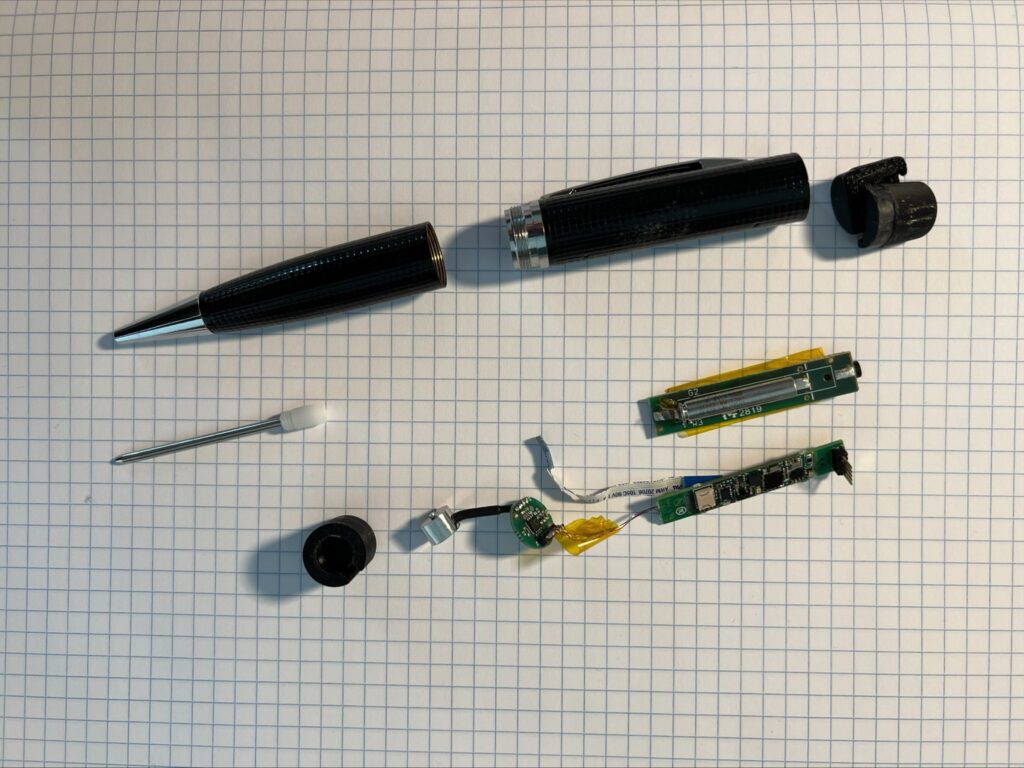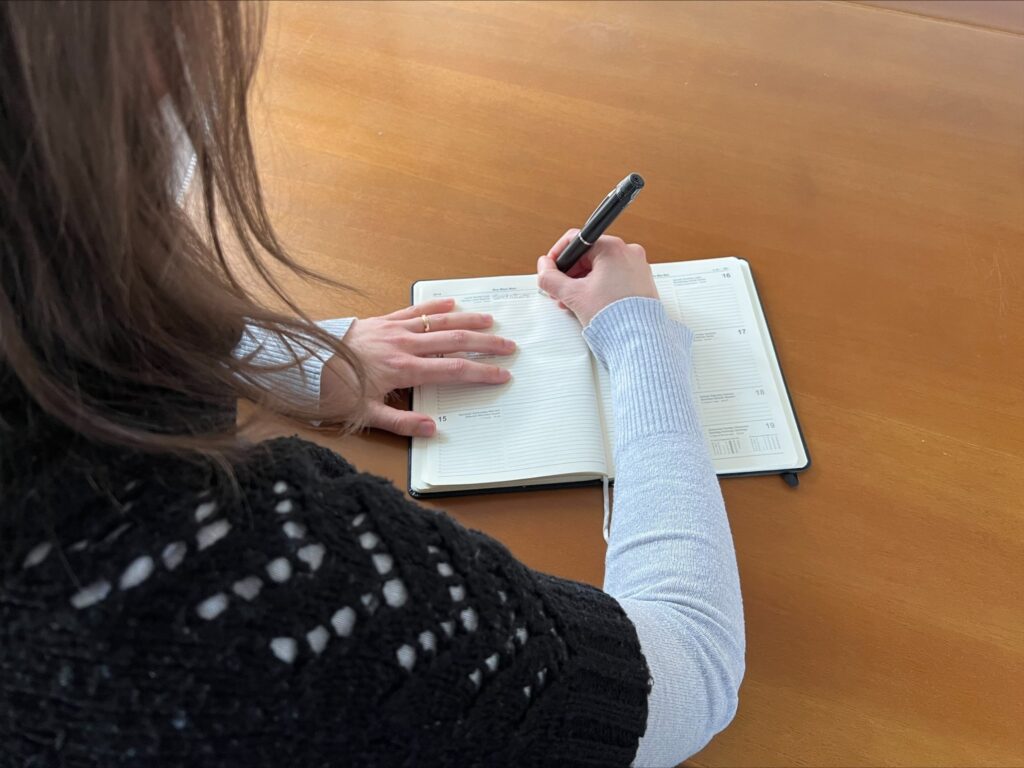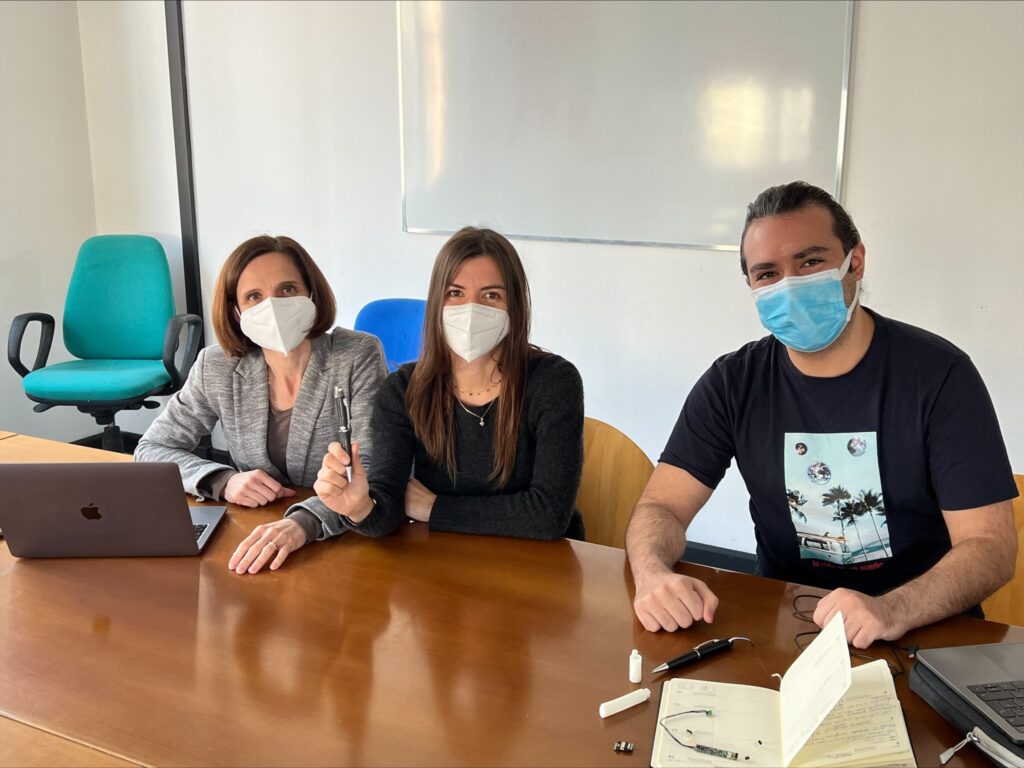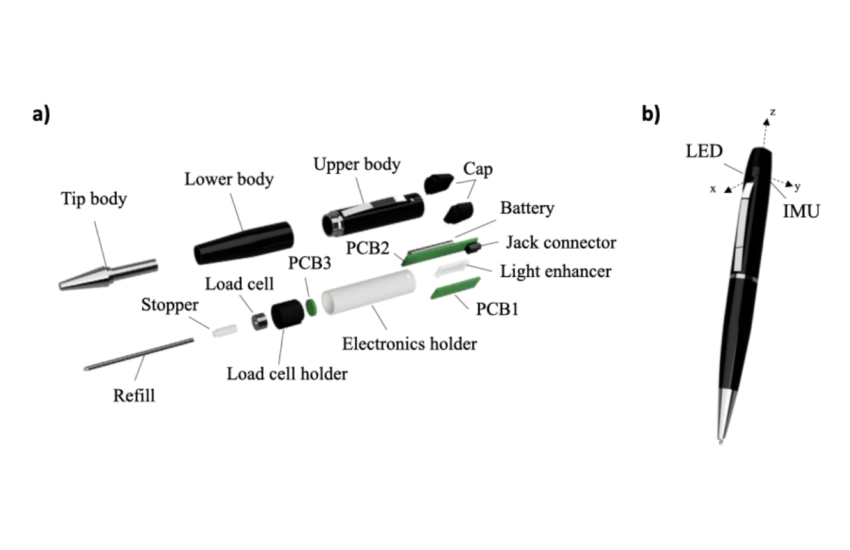How THInkPen was born
Italy has a high percentage of elderly citizens. So, how important is it to carry out research to support these people? How important is it to monitor the physical and cognitive conditions of these patients?
THInkPen was conceived with this in mind. It is the first sensor ink pen, patented by the Politecnico in partnership with Università degli Studi di Milano. THInkPen can detect alterations in handwriting without neglecting the natural feel and easy use of the conventional paper and pen approach.
The patent was conceived as part of the European project H2020 MoveCare. The project, coordinated by the Università Statale di Milano, aimed at developing a home-based platform to support independent elderly people by monitoring, providing assistance and promoting activities to prevent both physical and cognitive decline and social exclusion. The Politecnico’s team, headed by Professor Simona Ferrante, was in charge of the monitoring process.
When it comes to remote monitoring in support of early diagnosis, the user is still an independent person and, therefore, less inclined to accept any evident intrusion into his or her daily life. Hence, the keyword for development was “transparency”. Technology must be minimally invasive, and it must not disturb the user. Monitoring must be carried out without interfering, or barely intervening in a person’s daily life. Hence the idea of enhancing one of the most common day-to-day objects with sensors, precisely an ink pen.
Why did you choose a pen? The pen allows us to monitor the user’s handwriting. Analysing a person’s handwriting is important as this is one of the daily gestures that first feels the effect of the onset of age-related neurodegenerative diseases, such as Alzheimer’s Disease and Parkinson’s Disease. Indeed, the process of writing involves a complex harmony of cognitive, sensory skills and motor control. Hence, monitoring handwriting can facilitate early diagnosis of these diseases.
What is the core concept of the patent?
THInkPen is an IoT (Internet of Things) ink pen enhanced with motion and force sensors, as well as data processing and communication features. THInkPen performs remote monitoring of handwriting in a non-invasive manner for the end user. It cannot be distinguished from a normal ink pen, and no instructions are given to the user, other than to use it for habitual writing.
The pen allows the simultaneous study of both handwriting and tremor characteristics during both standard writing tests and free writing.
Sensor data is automatically stored and downloaded at a later date. Once they are downloaded, the data are analysed using algorithms developed by researchers at the Politecnico to extract clinically relevant indicators, which quantify alterations in handwriting and tremors.

What about its applications?
Handwriting alterations are typical signs of a wide range of diseases. This is why THInkPen can be used for high risk patients, or those diagnosed with age-related neurodegenerative diseases, such as Alzheimer’s Disease or Parkinson’s Disease, neurological diseases, such as essential tremor, dystonia, Huntington’s Disease, or specific learning disorders, such as dysgraphia.
This technology can be applied both in a clinical setting and in the user’s home. In the first case, THInkPen can support clinical practice by contributing to the quantitative assessment of symptom severity and to the differential diagnosis of patients. With regard to remote use, THInkPen is designed to support diagnosis, besides continuously monitoring the severity of symptoms and the effect of treatment in already diagnosed patients.

What are the benefits?
Handwriting analysis has been adopted as a clinical tool since the late 19th century.
The conventional pen and paper approach is preferred in clinical practice for simplicity and speed. However, it yields qualitative assessments based on the clinician’s experience, without being underpinned by quantitative data. This approach does not meet the current needs of health systems, which rely on telemedicine to solve problems, such as the limited availability of specialists, the short time available to conduct tests, and the difficulty some patients have in reaching the examination site.
Present day technologies for quantitative handwriting assessment are graphic tablets and tablets. This approach has considerable limitations as it forces the user to write on a small area – a far cry from the traditional writing surface – thus impairing the natural feel and ecological validity of the gesture. Such technologies may not be easy to use, especially when dealing with elderly users, who often require technical support.
THInkPen is the first sensor ink pen capable of assessing handwriting alterations without neglecting the natural feel and easy use of the traditional pen and paper approach.
THInkPen’s special features include simplicity, intuitiveness and transparency. Our aim is to achieve reliable quantitative monitoring of handwriting without interfering with the user’s daily habits. Hence, THInkPen fully replaces an ordinary pen:
- • it looks like a common ink pen;
- • it can write on plain paper;
- • it does not require any interaction with the end user; indeed, the pen is operated by motion detection or external request, and data downloading is automated;
- • supervision by experienced operators is not required.
These features are crucial to improve acceptance and reduce the technological anxiety that often characterises certain user populations, such as elderly patients. This is even more important when the device is intended for continuous home monitoring, as in the case of the proposed technology.

What stage has the patent reached?
Currently, as part of the European ESSENCE project, Polimi and Unimi researchers are working on the engineering process of the prototype pen. A pilot study is planned to take place within the same project. During the study, the pen will be used in the homes of 60 healthy children and 60 healthy elderly people for one year.
In parallel, a number of pre-clinical studies are being conducted on different patient populations to optimise data analysis algorithms for different diseases. In particular, in collaboration with the Fondazione IRCCS Istituto Neurologico Besta, researchers are working on acquisitions in paediatric patients with dystonia and tremor, and in patients with essential tremor. In collaboration with IRCCS Istituti Clinici Scientifici Maugeri, the pen is being tested on patients suffering from Parkinson’s Disease. In partnership with Fondazione Don Carlo Gnocchi, researchers are gathering data from patients with mild cognitive impairment and dementia, and from children with dysgraphia.

A team of women
The THInkPen team of inventors is mainly made up of women, and includes two professors from the Department of Electronics, Information and Bioengineering at the Politecnico di Milano, Simona Ferrante and Alessandra Pedrocchi. Alberto Borghese from the Department of Computer Science at the Università Statale di Milano has also been involved. Francesca Lunardini, a Polimi postdoc, and a research fellow, Milad Malavolti, participated in the project with Polimi PhD student, Davide Di Febbo.
Francesca and Milad then developed the project further by participating in and winning the 2020 edition of Switch2Product, where the name THInkPen (Tele-Health Ink Pen) was conceived.

